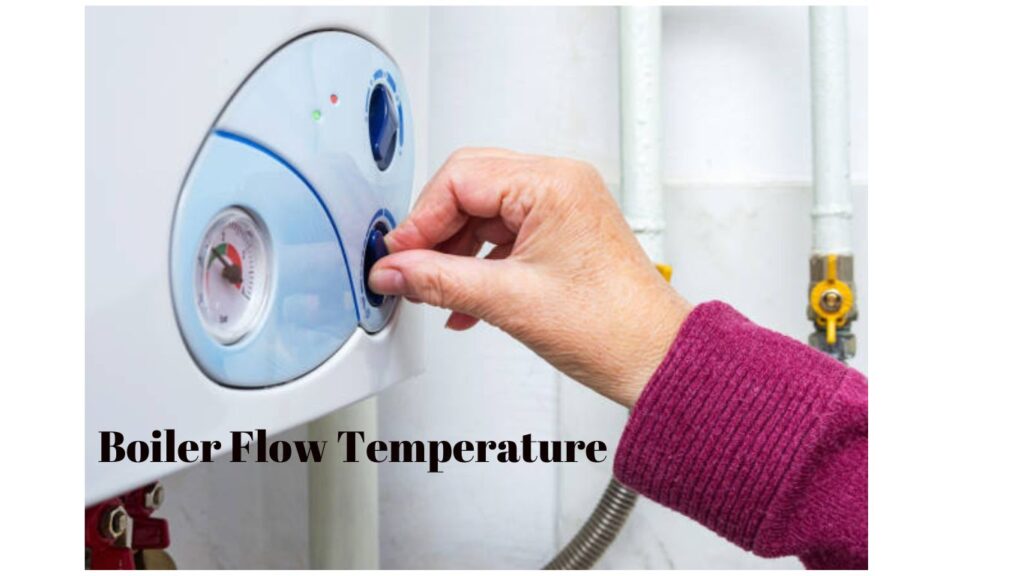
If you’re a homeowner or a landlord, you know how important it is to maintain your boiler. One of the most important aspects of boiler maintenance is ensuring that the flow temperature is set correctly. The flow temperature is the temperature of the water that is pumped from the boiler to the radiators and taps in your home. If it’s set too high, you’ll be wasting energy and money, and if it’s set too low, your home won’t be warm enough.
The optimal flow temperature for your boiler depends on several factors, including the type of boiler you have and the age of your home. For example, combi boilers typically have a lower optimal flow temperature than system boilers.
The recommended flow temperature for a combi boiler is usually between 50-65°C, while a system boiler might require a higher return temperature of between 65-80°C. Adjusting your boiler’s flow temperature can help you save on energy bills while keeping your home at a comfortable temperature.
Adjusting your boiler’s flow temperature is a simple process that you can do yourself. However, it’s important to be cautious and not set the temperature too low, as this can cause your boiler to work harder to maintain a comfortable temperature, which can result in higher energy bills.
If you’re unsure about how to adjust your boiler’s flow temperature, consult the manufacturer’s instructions or contact a qualified heating engineer. With the right flow temperature, you can keep your home warm and comfortable while saving on energy bills.
What is Boiler Flow Temperature?
Boiler flow temperature refers to the temperature of the water that circulates through your central heating system. It is the temperature at which water leaves your boiler and enters your radiators or underfloor heating.
Understanding Boiler Flow Temperature
Boiler flow temperature is an important factor to consider when it comes to maintaining an efficient and effective central heating system. The ideal flow temperature for your boiler will depend on the type of boiler you have and the specific requirements of your home.
There are three main types of boilers: Combi, Heat-only, and System boilers. Each of these boilers has its own recommended flow temperature. For example, a Combi boiler should be set between 50-65°C whereas a System boiler might require higher return temperatures; between 65-80°C.
Why is Boiler Flow Temperature Important?
Boiler flow temperature is important for a number of reasons. Firstly, it affects the efficiency of your central heating system. If your flow temperature is set too high, your boiler will consume more energy than necessary, resulting in higher energy bills. On the other hand, if the temperature is set too low, your home may not reach the desired temperature, and your boiler may have to work harder to maintain the set temperature.
Secondly, boiler flow temperature can affect the lifespan of your boiler. If the temperature is set too high, it can cause wear and tear on your boiler, leading to breakdowns and repairs. Conversely, if the temperature is set too low, it can cause condensation to form inside your boiler, which can lead to corrosion and rust.
In conclusion, understanding and setting the correct boiler flow temperature is essential for maintaining an efficient and effective central heating system. By setting the correct temperature, you can reduce your energy bills, prolong the lifespan of your boiler, and ensure your home stays warm and comfortable.
What Should the Boiler Flow Temperature Be?
When it comes to setting the boiler flow temperature, there are a few factors that you need to consider. In this section, we will discuss these factors and provide you with an ideal boiler flow temperature that you can use as a guideline.
Factors Affecting Boiler Flow Temperature
The ideal boiler flow temperature can vary depending on a number of factors, including:
- The type of boiler you have: Different types of boilers require different flow temperatures. For example, a Combi boiler should be set between 50-65°C, whereas a System boiler might require higher return temperatures; between 65-80°C.
- The size of your property: The size of your property can also affect the boiler flow temperature. Larger properties may require a higher flow temperature to ensure that all areas are heated adequately.
- The insulation of your property: If your property is well-insulated, you may be able to set a lower flow temperature as the heat will be retained more effectively.
Ideal Boiler Flow Temperature
The ideal boiler flow temperature is one that provides efficient heating while also ensuring that your boiler is not working harder than it needs to. According to the Energy Saving Trust, turning down the flow temperature improves the boiler efficiency by around 4% to 5%.
As a general guideline, a flow temperature of around 60-65°C is considered to be ideal for most households. However, it’s important to note that this may not be suitable for every property.
If you’re unsure what the ideal boiler flow temperature is for your property, it’s best to consult a heating engineer or your boiler manufacturer for advice. They will be able to take into account all the relevant factors and provide you with a tailored recommendation.
Remember, setting the correct boiler flow temperature can help reduce your energy bills and ensure that your boiler is working efficiently.
How to Adjust Boiler Flow Temperature
If you want to adjust your boiler flow temperature, there are a few steps you need to follow. In this section, we will guide you through the process of adjusting the flow temperature on your boiler.
Checking the Current Temperature
Before you adjust your boiler flow temperature, you need to know what the current temperature is. To check the temperature, you can use a thermometer or check the display on your boiler.
Adjusting the Boiler Flow Temperature
Once you know the current temperature, you can adjust the flow temperature on your boiler. The method for adjusting the temperature will depend on the type of boiler you have.
- For a combi boiler, you can adjust the flow temperature by using the boiler control panel. Look for the temperature control button or menu and use the up and down arrows to adjust the temperature.
- For a system boiler, you will need to adjust the temperature on the heating system control panel. Look for the temperature control button or menu and use the up and down arrows to adjust the temperature.
- For a regular boiler, you will need to adjust the temperature on the boiler itself. Look for the temperature control button or dial and use the up and down arrows or turn the dial to adjust the temperature.
When adjusting the temperature, it’s important to make small adjustments and wait for the temperature to stabilise before making further adjustments.
Testing the New Temperature
Once you have adjusted the temperature, you should test the new temperature to make sure it’s at the desired level. You can do this by running hot water from a tap and checking the temperature with a thermometer.
If the temperature is too high or too low, you can make further adjustments until you reach the desired temperature.
Remember, adjusting the flow temperature on your boiler can have an impact on its efficiency and performance, so it’s important to make sure you are setting it to the correct temperature for your needs.
